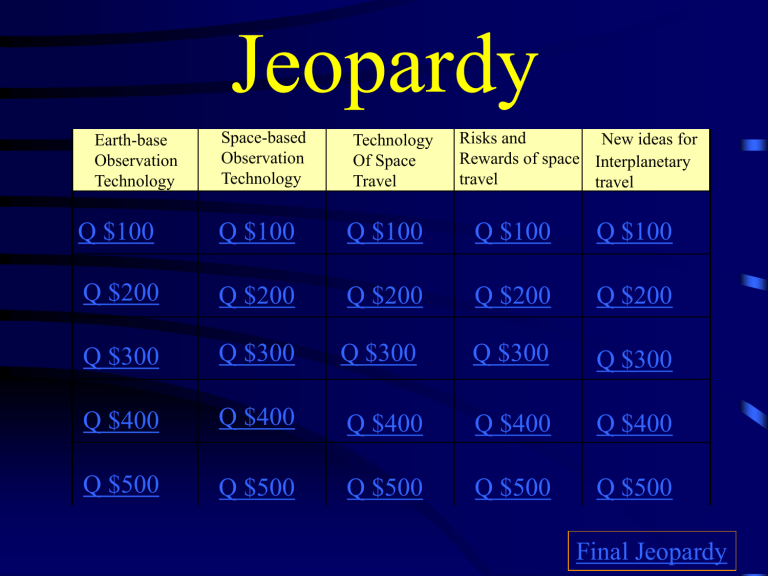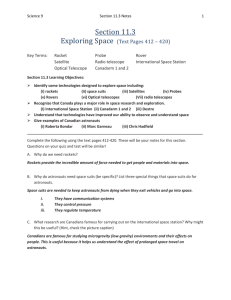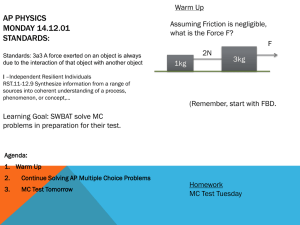Sci 09 jeopardy 12_3

Earth-base
Observation
Technology
Jeopardy
Space-based
Observation
Technology
Technology
Of Space
Travel
Risks and
Rewards of space travel
New ideas for
Interplanetary travel
Who invented the first telescope
Hans Lippershey
What did the first telescopes collect for observing
Light
Where is the worlds largest radio receiver located
Arecibo
(Puerto Rico)
Why were non optical telescopes developed
Many objects in space are not visible to the human eye
What are the 2 types of Optical telescopes
Refracting and Reflecting
Are satellites used for more than providing communications If so name one other reason
Yes monitoring forest fires, track migrating salmon, calculate the depth of the ocean, Measure ground movement to predict earthquakes and volcanic eruptions
Probes are designed to travel______ of kilometers
Millions
Robotic rovers only pause every______
Night
How many planets have probes visited
All the planets in the solar system
Name the most successful 3 devices we send to space
Satellites, Probes, robotic Rovers
How many main systems does a rocket have
A Rocket has 4 main systems
When was the international space station’s construction
1993
What is the lifetime expected of the international space station
30 years
What is the first stage of space travel
Launching un-crewed probes
The international space station is moving at speed past _____
27,000 km/h
Are only astronauts allowed to go to space
People can go to space on a short flight trip for a lot money
The fuel tank of the space station holds _____ kg of fuel
750,000 kg
The most obvious hazard of space travel is
Equipment failure
When was the first American space station Skylab broke down during orbit
1979
An idea related to space tourism is
Terraforming
The interplanetary slingshot idea is
Space sled
Name both interplanetary ideas
Space sled, Space elevator
Using the space elevator a person would be able to take a 5h ride for $____
$200
The space elevator would be about ____km long
36,000km
How fast would magnets propel the space sled
600km/h
Final Jeopardy
Which 3 planets have gigantic storms
That are larger than Earth itself
Final Jeopardy Answer
Jupiter, Saturn, Neptune











